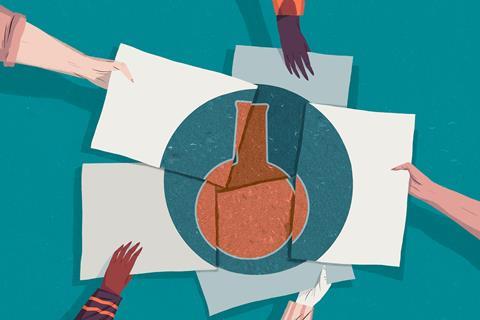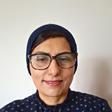Help students to open their minds, not just their textbooks

In a traditional Western classroom, the teacher typically narrates the subject and students receive the information, albeit in an interactive manner. A decolonial approach encourages greater connection to the learner and their lived experiences. Recognising and including marginalised voices and narratives in education also prepares teachers to share knowledge in a variety of contextual realities, particularly where there is a high population of BAME students, when it becomes even more important to embed curriculum inclusivity.
Open students’ minds to the work of chemists representing BAME cultures, encouraging a less limited view of the history of chemistry
Teachers can encourage students to question existing theories and paradigms, and consider the social and cultural contexts in which scientific research is conducted. This helps develop a more nuanced understanding of the limitations of and biases in scientific knowledge.
Just white is not right
In a world where perhaps the most universally known chemists are white – Marie Curie, Louis Pasteur and Michael Faraday, for example – this can give the mistaken impression that they are the only ones who have made significant contributions to chemistry. In turn, this makes students question whether they belong in this field. The following examples show that this is clearly not the case:
- James Andrew Harris – in 1969, became the first African American to discover a chemical element, namely elements 104 (rutherfordium) and 105 (dubnium) on the periodic table.
- Jabbir Ibn Hayyan – an Islamic 8th- to 9th-century scientific author who discovered distillation, crystallisation, filtration and other key techniques used in the curriculum.
- Alice Ball – an African American chemistry professor who developed a treatment for leprosy.
- Ibn al–Haytham – a 10th- to 11th-century scholar, who advocated that scientific theory was formulated through empirical study. He rejected Ptolemy’s theory of light being emitted by the eye and theorised that light bounces off every point on an object into the eye, where the rays are turned into information that the brain can process.
- Ibn Sina – at the end of the 10th century and into the 11th, promoted experimental medicine, insisting that drugs be tested under controlled conditions in his monumental work The canon of medicine. European medical schools relied heavily on Latin translations of his work up until the 17th century.
- Muhammad ibn Zakariyyā al-Rāzī – an Islamic polymath who introduced the earliest written methods for chemical classification and protocols for extractions. The contributions of many Islamic chemists linger in chemical names, eg alcohol (Al-kohl), elixir (Al-ikri) and alkali (Al-qali).
While teachers clearly cannot extend their decolonising endeavours to rewriting the textbooks, they can open students’ minds to the work of chemists representing BAME cultures, encouraging a less limited view of the history of chemistry. Showcasing academics from the global south on working walls, during open days, at enrichment clubs and when promoting careers in science are all positive steps in the right direction.
Read more on inclusive curriculums and decolonising teaching
- Mind the attainment gap: could an American university’s approach improve outcomes for BAME students in the UK?
- The highlight minorities in chemistry project: how students at Queen Mary University of London inspired a new generation of scientists from minority ethnic groups
- Decolonising chemistry teaching and learning: a collection of articles to help you make your science lessons more inclusive











No comments yet